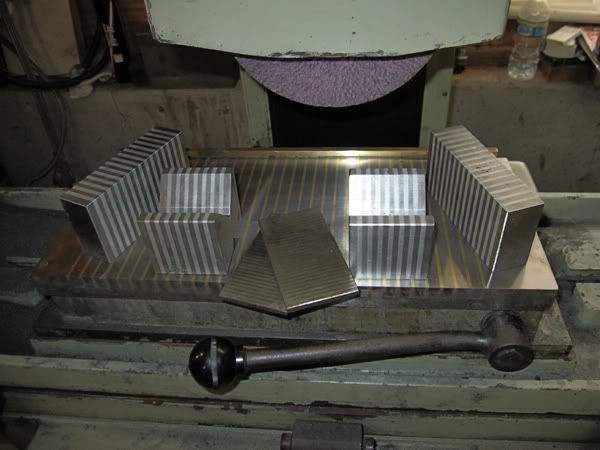MichaelP
Titanium
- Joined
- Dec 7, 2008
- Location
- IL/WI border
I wonder if anybody wants to share experience on making magnetic transfer v-blocks and parallels. In particular, I'm interested in those with ferrous metal pins (vs. laminated), so that they can be placed on the chuck at any angle.
Is it just a simple drill, ream and press fit type of deal? What's the best steel to use for the pins (magnetic quality wise yet easy to handle)? How to choose the most efficient diameter and number/concentration of the pins to increase the hold? Would you prefer bronse, brass or aluminum for the body and why?
Any thoughts, tips and technics (including those on best manual machining approaches to cut accurate Vs) would be appreciated.
Thank you.
Mike
Is it just a simple drill, ream and press fit type of deal? What's the best steel to use for the pins (magnetic quality wise yet easy to handle)? How to choose the most efficient diameter and number/concentration of the pins to increase the hold? Would you prefer bronse, brass or aluminum for the body and why?
Any thoughts, tips and technics (including those on best manual machining approaches to cut accurate Vs) would be appreciated.
Thank you.
Mike





